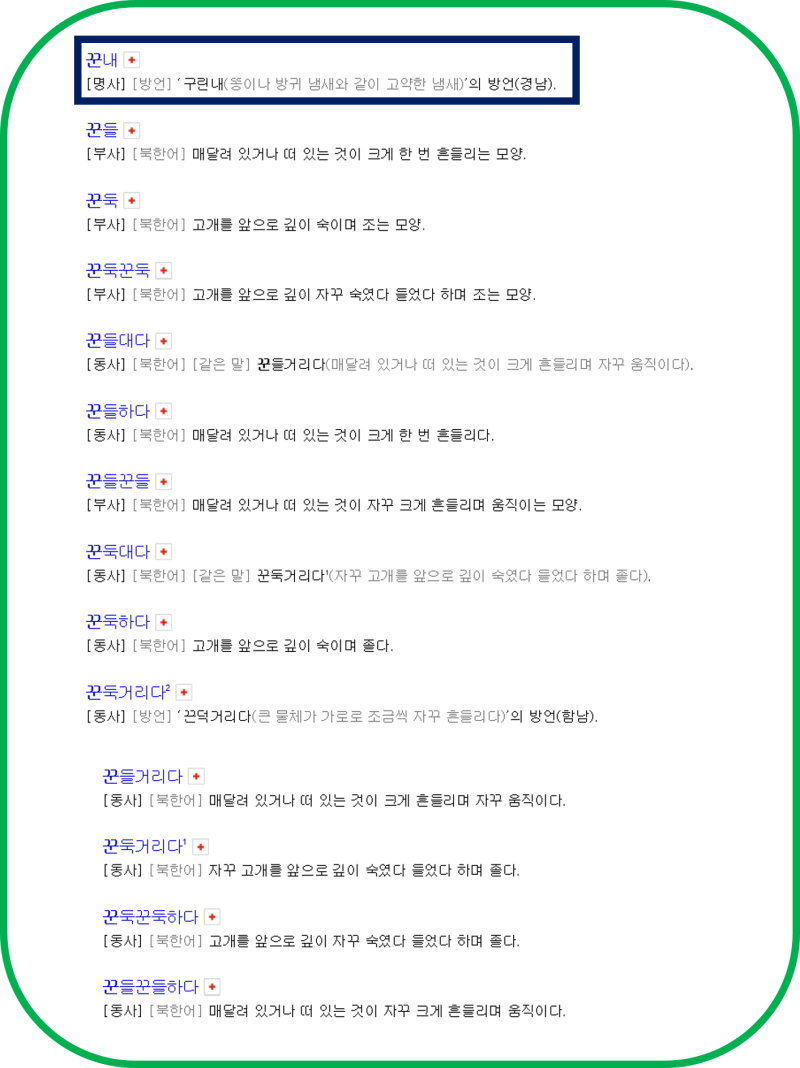꾼내
꾼내는 신체적인 불편감을 동반하는 심리적인 상태로, 일반적으로 몸이나 마음에 긴장이나 스트레스가 느껴지는 상황에서 발생합니다. 이러한 긴장이나 스트레스는 일상 생활에서 발생할 수 있는 다양한 상황에 의해 유발될 수 있습니다. 꾼내는 주로 어지러움, 두통, 졸림, 불안감, 근육통 등의 증상을 동반하며, 일상 생활의 질을 저하시킬 수 있는 심각한 문제로 여겨집니다.
꾼내 발생의 원인
꾼내는 다양한 요인에 의해 발생할 수 있습니다. 주요한 원인들은 아래와 같습니다:
1. 스트레스: 업무 압박이나 대인관계, 가족 문제 등으로 인한 스트레스는 꾼내를 유발하는 주요한 원인 중 하나입니다.
2. 불규칙한 생활습관: 불규칙한 식사시간, 충분한 휴식을 취하지 못하는 등의 생활습관은 신체적인 불편감을 유발하여 꾼내를 초래할 수 있습니다.
3. 건강문제: 만성적인 질환, 신체적인 불균형, 부족한 영양소 섭취 등에 의해 꾼내가 발생할 수 있습니다.
4. 정신적인 문제: 우울감, 불안감, 스트레스 등 정신적인 문제는 꾼내를 유발하는 원인 중 하나입니다.
꾼내의 유형과 증상
꾼내에는 다양한 유형과 증상이 있습니다. 일반적으로 꾼내의 주요한 유형과 증상은 다음과 같습니다:
1. 어지러움: 어지러움은 꾼내의 가장 일반적인 증상 중 하나입니다. 몸이 불안정하게 느껴지며, 외부 환경이 회전하거나 흔들리는 것처럼 느껴질 수 있습니다.
2. 두통: 두통은 꾼내와 관련된 또 다른 증상입니다. 강한 두통이나 찌르는 느낌이 발생할 수 있으며, 일상적인 활동을 어렵게 만들 수 있습니다.
3. 졸림: 꾼내는 졸림을 유발할 수 있으며, 몸이 피곤하고 졸리게 느껴지는 상태일 때 발생할 수 있습니다.
4. 불안감과 불안정: 꾼내는 불안감과 불안정을 동반할 수 있습니다. 마음이 불안하게 느껴지며, 긴장 상태에 있을 수 있습니다.
5. 근육통: 흔히 꾼내는 근육통을 유발할 수 있습니다. 몸의 다양한 부위에서 근육통이 발생할 수 있으며, 신체적인 불편감을 더욱 심화시킬 수 있습니다.
꾼내 진단 방법
꾼내의 진단은 의사나 전문가의 도움이 필요합니다. 의사는 환자의 증상과 의학적인 조사를 통해 꾼내를 진단할 수 있습니다. 먼저 환자의 증상과 의심되는 원인을 파악하고, 신체적인 검사 및 혈압, 맥박 등을 확인하여 진단할 수 있습니다. 또한, 환자의 심리상태와 정신적인 문제도 평가할 수 있습니다.
꾼내 예방과 관리 방법
꾼내를 예방하고 관리하기 위해서는 아래에 제시된 방법들이 도움이 될 수 있습니다:
1. 스트레스 관리: 스트레스를 완전히 없앨 수는 없지만, 스트레스 관리 방법을 익히는 것은 꾼내를 예방하고 관리하는 데 도움이 될 수 있습니다. 명상이나 요가와 같은 심리적인 스트레스 해소법을 적용해 보세요.
2. 건강한 생활습관: 규칙적인 식사시간과 충분한 휴식, 균형 잡힌 식단 등 건강한 생활습관을 유지하는 것이 중요합니다. 신체적인 건강을 유지하는 것은 꾼내를 예방하는 데 도움이 됩니다.
3. 운동: 꾼내와 관련된 육체적인 불편감을 줄이기 위해 운동을 꾸준히 실천해야 합니다. 유산소 운동이나 스트레칭을 포함한 다양한 운동 방법을 선택하세요.
4. 휴식: 충분한 휴식과 수면을 취하는 것 또한 꾼내를 예방하고 관리하는 데 큰 도움이 됩니다. 스트레스 상황에서 마음을 편안하게 만들고 꾼내를 최소화하기 위해 충분한 휴식을 취하세요.
꾼내에 대한 일반적인 상식
꾼내는 신체적인 불편감을 동반하는 심리적인 상태입니다. 스트레스, 불규칙한 생활습관, 건강문제, 정신적인 문제 등이 원인이 될 수 있습니다. 꾼내의 증상으로는 어지러움, 두통, 졸림, 불안감, 근육통 등이 있습니다. 의사에게 진단을 받고 꾼내를 예방하고 관리하기 위해 적절한 조치를 취해야 합니다.
꾼내와 관련된 현대적인 연구 동향
현대적인 연구들은 꾼내와 관련된 요인들과 그 효과에 대해 더욱 깊이 연구하고 있습니다. 스트레스 관리, 건강한 생활습관, 정신적인 문제의 해결 등을 중점으로 한 연구들이 이루어지고 있으며, 이러한 연구들은 꾼내에 대한 방법론과 치료법에 대한 이해를 높일 수 있습니다.
꾼으로 시작하는 단어, 꾼소리, 내로 시작하는 단어, 끝말잇기 한방단어, 즈로 시작하는 단어, 내로 시작하는 한방단어, 장으로 시작하는 단어, 껑으로 시작하는 단어꾼내
꾼으로 시작하는 단어: 꾼어 (trickster), 꾼소 (deception)
꾼소리: 꾼꾼하다 (trickling sound)
내로 시작하는 단어: 내용 (content), 내못 (inside nail)
끝말잇기 한방단어: 꾼 (trickster) – 내 (inside)
즈로 시작하는 단어: 즈랄다 (to be pitiful)
내로 시작하는 한방단어: 내다 (to put down) – 내돈 (my money)
장으로 시작하는 단어: 장난감 (toy), 장소 (place)
껑으로 시작하는 단어: 껑수리 (carpenter)
FAQs:
1. 꾼내는 어떻게 발생하나요?
꾼내는 스트레스, 불규칙한 생활습관, 건강문제, 정신적인 문제 등에 의해 발생할 수 있습니다.
2. 어떤 증상들이 꾼내와 관련이 있나요?
주로 어지러움, 두통, 졸림, 불안감, 근육통 등의 증상이 꾼내와 관련이 있을 수 있습니다.
3. 꾼내를 어떻게 진단하나요?
꾼내의 진단은 의사나 전문가의 도움이 필요합니다. 의사는 환자의 증상과 의학적인 조사를 통해 꾼내를 진단할 수 있습니다.
4. 꾼내를 어떻게 예방하고 관리할 수 있나요?
스트레스 관리, 건강한 생활습관, 정신적인 문제의 해결 등을 중점으로 하여 꾼내를 예방하고 관리할 수 있습니다.
5. 꾼내와 관련된 연구는 어떤 형태로 이루어지고 있나요?
현대적인 연구들은 꾼내와 관련된 요인들과 그 효과에 대해 연구를 진행하고 있으며, 스트레스 관리, 건강한 생활습관, 정신적인 문제의 해결 등을 중점으로 한 연구들이 이루어지고 있습니다.
사용자가 검색한 키워드: 꾼내 꾼으로 시작하는 단어, 꾼소리, 내로 시작하는 단어, 끝말잇기 한방단어, 즈로 시작하는 단어, 내로 시작하는 한방단어, 장으로 시작하는 단어, 껑으로 시작하는 단어
Categories: Top 18 꾼내
[꾼내]일을 하는 만큼 돈을 벌어라!무료 문상,깊카 앱 리뷰(cashper)
여기에서 자세히 보기: experience-porthcawl.com
꾼으로 시작하는 단어
국어를 배울 때, 단어를 알면 문장을 이해하고 자신의 생각을 표현하는데 큰 도움이 됩니다. 이번에는 꾼으로 시작하는 단어들에 대해 알아보겠습니다. 이 단어들은 국어를 학습하고자 하는 사람들에게 특히 유용하며, 다양한 상황에서 쓸 수 있는 어휘를 소개해 드립니다.
1. 꾼짱 (두더지 + 꾼)
– 꾼짱은 한 가지 일에 엄청난 실력을 가진 사람을 일컫는 말입니다. 두더지처럼 아무도 몰래 뛰어드는 능력을 가진 꾼이라는 의미로 사용됩니다. 꾼짱은 주로 어떤 분야에서 탁월한 성과를 거둔 사람을 칭하며, 해당 분야의 전문성과 전문 용어에 대한 이해력을 갖춘 사람을 뜻하기도 합니다. 예를 들어, “그 사람은 꾼짱이야!”라고 할 때, 그 사람은 그 분야에서 아주 뛰어난 업적을 이룬 사람이라는 뜻입니다.
2. 꾼덜미 (눈을 뜨다 + 꾼)
– 꾼덜미는 눈을 뜨게 만드는 일에 대한 의지력과 끈기를 가진 사람을 묘사하는 표현입니다. 꾼덜미가 있는 사람들은 일에 대한 목표를 뚜렷이 가지고 있으며, 눈을 뜨고 그 목표를 이루기 위해 노력하는 모습을 이야기합니다. 이 표현은 주로 목표를 위해 힘겨운 과정을 견뎌내는 사람이나 열정적으로 일을 하는 사람을 일컬을 때 사용됩니다. 예를 들어, “그 소설가는 꾼덜미가 강하다”라고 하면 그 소설가는 글을 쓰는 일에 대한 목표를 고집스럽게 추구하며, 끈기 있게 작업을 이어간다는 것을 의미합니다.
3. 꾼두팔 (꾼 + 두팔)
– 꾼두팔은 온전한 꾼의 능력이 있는 사람을 의미합니다. 꾼짓거리를 많이 하는 사람이라고도 표현할 수 있습니다. 이 표현은 다재다능한 사람이나 다양한 분야에서 활약하는 사람에게 주로 사용됩니다. “그 사람은 꾼두팔이야”라고 할 때, 그 사람은 다양한 일을 잘할 뿐만 아니라, 그 일들을 뛰어난 실력으로 수행하는 사람이란 뜻입니다. 그 사람은 예를 들어, 음악, 운동, 미술 등 여러 분야에서 활약하며 다재다능한 사람이라고 말할 수 있습니다.
4. 꾼꾼 (꾼 + 꾼)
– 꾼꾼은 속임수를 부리며 이기려고 하는 사람을 의미합니다. 이 표현은 부정적인 의미로 사용되며, 속이고 기만하는 사람을 비하하거나 비난하기 위해 사용될 수 있습니다. 예를 들어, “저 인간은 정말 꾼꾼이야”라고 할 때, 그 사람은 다른 사람을 속이고 이기려고 하는 의도를 가진 사람이라는 뜻입니다.
5. 꾼손 (말로만 우쭐대며 손실만 주는 사람)
– 꾼손은 자기 자신을 손해에서 벗어나게 만들어 주는 사람을 의미합니다. 이 표현은 주로 판단력이 부족하거나 말로만 행동을 하는 사람, 그리고 말로는 큰 소리를 지르고 허세를 부리지만 실제 효과가 없는 사람을 묘사할 때 사용됩니다. 예를 들어, “그 사람은 정말 꾼손이야!”라고 할 때, 그 사람은 말만 많이 하지만 실제로는 아무런 결과를 이루지 못하거나 오히려 역효과를 일으키는 사람을 지칭합니다.
자주 묻는 질문(FAQ)
1. 꾼으로 시작하는 단어가 쓰이는 상황은 어떤 것이 있나요?
꾼으로 시작하는 단어는 다양한 상황에서 사용될 수 있습니다. 일상 대화, 문학 작품, 신문 기사, 논문, 토론 등의 다양한 맥락에서 해당 단어들을 만날 수 있습니다. 이러한 단어들은 국어 학습을 통해 풍부한 어휘를 습득하고, 생각을 정확하고 효과적으로 표현하기 위해 유용합니다.
2. 꾼으로 시작하는 단어를 외우는 것이 중요한가요?
꾼으로 시작하는 단어를 외우는 것은 중요합니다. 이러한 어휘를 알면, 다양하고 정확한 표현을 할 수 있고, 국어 실력이 향상됩니다. 또한, 해당 단어들을 다른 맥락에서 보게 되면 다양한 상황에서 적절한 표현을 선택할 수 있게 됩니다.
3. 꾼으로 시작하는 단어 외에도 어떤 관련 어휘가 있나요?
꾼으로 시작하는 단어 이외에도 많은 관련 어휘들이 있습니다. 꾼에 대한 관련 어휘로는 “꾸민뱃사공”, “꾸준함”, “꾀꼬리”, “구닥다리” 등이 있습니다. 이러한 어휘들을 함께 습득하면, 더욱 다양하고 풍부한 표현력을 갖출 수 있습니다.
이렇듯, 꾼으로 시작하는 단어들은 국어 학습을 통해 어휘를 풍부하게 하고, 다양한 상황에서 적절한 표현을 할 수 있는 능력을 기를 수 있습니다. 이러한 어휘들은 한국어 학습자에게 꼭 알아두면 좋은 어휘들이며, 일상에서도 유용하게 활용할 수 있는 말들입니다.
꾼소리
History of Kkunsori
Kkunsori has its roots in the 18th and 19th centuries when it was primarily performed by traveling entertainers known as namsadang. These skilled performers traveled from village to village, captivating audiences through their storytelling skills. The namsadang troupes consisted of a diverse range of entertainers, including singers, dancers, actors, and of course, kkunsori performers.
Characteristics of Kkunsori
Kkunsori is characterized by its lively and dynamic rhythm, combined with an engaging storytelling technique. The kkunsori performer takes on multiple roles, switching between different characters in the story, and uses various vocal techniques to bring the narrative to life. The performer often punctuates the story with rhythmic clapping, stomping, or percussive sounds, enhancing the overall theatrical experience.
The stories performed in kkunsori vary widely, ranging from historical episodes to folk tales, legends, and even satirical commentaries on societal issues. One of the most famous kkunsori stories is “Heungbu and Nolbu,” a timeless tale of two contrasting brothers that teaches moral lessons of kindness and generosity.
Kkunsori’s Cultural Influence
Kkunsori has had a profound impact on Korean culture and society. In the past, it served as a platform to convey social criticism and satire, often challenging societal norms and promoting messages of equality and justice. Today, kkunsori continues to be cherished as a form of entertainment and a medium to preserve traditional Korean culture.
The popularity and cultural significance of kkunsori can be evidenced by its inclusion on the UNESCO Intangible Cultural Heritage list. This recognition has helped to raise awareness and ensure the preservation of this unique art form for future generations.
FAQs about Kkunsori:
Q: Is kkunsori only performed in Korean?
A: Yes, kkunsori is predominantly performed in the Korean language, as it is deeply intertwined with Korean culture and traditions. However, there have been efforts to adapt kkunsori to other languages to make it accessible to wider audiences.
Q: How long does a kkunsori performance typically last?
A: The duration of a kkunsori performance can vary depending on the story being told and the performer’s style. Generally, a performance can range from 30 minutes to over an hour.
Q: Are there any famous kkunsori performers?
A: Yes, there have been many renowned kkunsori performers throughout history. One famous modern-day kkunsori performer is Ahn Sook-sun, who has dedicated her life to preserving and promoting this traditional art form.
Q: Is kkunsori still popular in modern-day Korea?
A: While kkunsori has faced challenges in maintaining its popularity with the rise of modern entertainment forms, it still manages to captivate audiences, especially those who appreciate traditional arts and the cultural heritage of Korea.
Q: Can non-Koreans enjoy and understand kkunsori performances?
A: Absolutely! While a basic understanding of the Korean language would enhance the overall experience, the dynamic and visual elements of kkunsori make it enjoyable for audiences regardless of their cultural background.
Q: Is kkunsori only performed on stage?
A: Kkunsori can be performed in various settings, ranging from traditional theater spaces to street performances or even private gatherings. The adaptability of this art form allows it to be appreciated in different contexts.
In conclusion, kkunsori is a cherished cultural treasure of Korea, deeply rooted in its history and traditions. This unique storytelling art form continues to captivate audiences with its rhythmic delivery, dynamic performances, and engaging narratives. Recognized as an intangible cultural heritage by UNESCO, kkunsori holds a special place in Korean culture and continues to inspire and entertain people across generations.
내로 시작하는 단어
Are you curious about the Korean language? Have you ever wondered about the unique qualities that make it distinct and beautiful? If so, you may be interested in diving into the fascinating realm of Korean vocabulary. In this article, we will be focusing on a special category of Korean words that begin with the syllable “내.” From everyday terms to complex expressions, we will explore their meanings, usage, and cultural significance. So, prepare yourself for an exciting linguistic journey as we unravel the rich tapestry of 내로 시작하는 단어 (Naero Sijakhaneun Daneo) – words that begin with “내.”
To understand the significance of these words, it’s important to note that the first syllable in Korean words often carries a lot of weight. In fact, it can influence the entire meaning of a word. “내” (nae) itself is a versatile word that holds multiple meanings, including “I,” “me,” and “my.” Consequently, words that start with “내” commonly have connotations related to oneself or personal experiences.
Whether you’re a beginner or an advanced Korean language learner, studying words that begin with “내” can greatly enhance your vocabulary. A vast array of such words exists, ranging from basic terms to expressions that capture cultural peculiarities. Let’s explore a few examples:
1. 내일 (naeil) – Meaning “tomorrow,” this word refers to the day after today. “내일” is a frequently used term, reminding us that every new day is a chance for growth and fresh beginnings.
2. 내방 (naebang) – This word refers to one’s own room or personal space. The cultural importance of personal spaces in Korea makes this word uniquely significant, highlighting the emphasis placed on individuality and privacy.
3. 내적 (naejjeok) – With a meaning similar to “inner,” this term is often used to describe someone’s inner thoughts, emotions, or personality traits. It represents the notion that true understanding comes from exploring one’s inner self.
4. 내외 (naeoi) – This word expresses the concept of “husband and wife” or “inside and outside.” It symbolizes the harmony between two entities and the balance achieved in their interactions.
Now, let’s answer some frequently asked questions about 내로 시작하는 단어:
Q1: What is the cultural significance of words starting with “내” in Korean language?
A1: Words starting with “내” often relate to personal experiences, individuality, and self-reflection. They reflect the importance of self-awareness, privacy, and maintaining a sense of individual identity within Korean society.
Q2: Are words beginning with “내” commonly used in everyday conversations?
A2: Yes, many words starting with “내” are a part of everyday vocabulary in the Korean language. From expressing personal feelings to referring to simple objects, these words are ingrained in daily conversations.
Q3: Can learning words starting with “내” help improve language fluency?
A3: Absolutely! Expanding your knowledge of words starting with “내” allows for greater precision and clarity in communication. It enables you to convey your thoughts, emotions, and experiences more accurately, adding depth to spoken and written expressions.
Q4: Are there any cultural considerations when using words starting with “내” in Korean?
A4: In Korean culture, politeness is valued, and addressing someone using the correct honorifics is crucial. When referring to oneself or using words that start with “내,” it is important to be mindful of the context and the appropriate level of politeness, depending on the social situation.
Q5: Are there any challenges in learning words that begin with “내” for non-native speakers?
A5: Like any language, learning Korean has its challenges. However, once you become familiar with the unique properties of words starting with “내” and develop a good understanding of Korean grammar and vocabulary, you will find that it becomes easier to incorporate these words into your everyday language use.
In conclusion, the world of 내로 시작하는 단어 holds endless opportunities for language learners and anyone interested in Korean culture. By exploring the meanings, usages, and cultural significance of words beginning with “내,” we gain insights into the fascinating intricacies of the Korean language. So, let your curiosity guide you as you embark on this linguistic journey, expanding your Korean vocabulary one word at a time.
주제와 관련된 이미지 꾼내
![[꾼내]일을 하는 만큼 돈을 벌어라!무료 문상,깊카 앱 리뷰(cashper) [꾼내]일을 하는 만큼 돈을 벌어라!무료 문상,깊카 앱 리뷰(cashper)](https://experience-porthcawl.com/wp-content/uploads/2023/06/hqdefault-1786.jpg)
꾼내 주제와 관련된 이미지 12개를 찾았습니다.













![꾼내]일을 하는 만큼 돈을 벌어라!무료 문상,깊카 앱 리뷰(cashper) - YouTube 꾼내]일을 하는 만큼 돈을 벌어라!무료 문상,깊카 앱 리뷰(Cashper) - Youtube](https://i.ytimg.com/vi/IF2aH-Yramw/maxresdefault.jpg?sqp=-oaymwEmCIAKENAF8quKqQMa8AEB-AHIAYAC6AKKAgwIABABGGUgZShlMA8=&rs=AOn4CLBsxCE6kUmFZbCFNUVrIGKcWbIYhA)






Article link: 꾼내.
주제에 대해 자세히 알아보기 꾼내.
- 꾼내 뜻: ‘구린내’의 방언 – WORDROW
- ‘꾼내’를 아세요? 꾼으로 시작하는 단어 정리(끝말잇기 한방 …
- 꾼내 멀까? 무엇을 말하는 것일까? – 티스토리
- 꾼내 – 끄코위키
- 꾼내 – 우리말샘 – 국립국어원
- 네이버 국어사전 – NAVER
- 꾼내, 꾼들, 꾼노리,꾼둑이뭔뜻인가요 – 지식로그
- #사랑꾼내남편 hashtag on Instagram • Photos and videos
- #꾼내 – Explore | Facebook
- 꾼으로 시작하는 단어 – 지역 방언, 북한말, 순화어, 표준어는 없음
더보기: https://experience-porthcawl.com/blog/